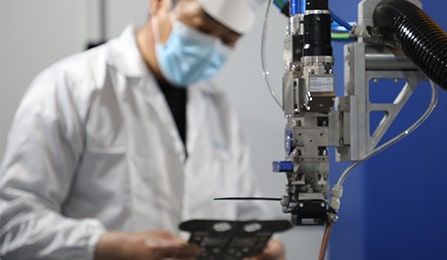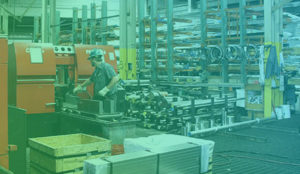What is a hardware prototype? In general, a prototype is the manifestation of the core features of a product. A prototype is sometimes also referred to as a minimum viable product (MVP) because the essential and minimally acceptable features are present. When a prototype is conceived, there might be grand aspirations for more features in the future, but the prototype aims to only incorporate those that are necessary. A prototype has been created to begin testing the device and measuring its functionality. Testing your prototype can also extend to your target audience and use it for market research. It’s recommended to get as much feedback throughout your development phases to ensure maximum usability among your end customer. Throughout this article, we will highlight tools to prototype a hardware device and greatly increase understanding of rapid prototyping in Shenzhen.
Prototyping Tools Used To Make The Perfect Hardware Device
Prototyping tools used by startups is usually dependent on what you’re looking to build. For example, an IoT device would require certain prototyping tools to test the network so that your IoT device won’t interfere with internet service providers & other connected devices. For network testing equipment you’d require an EMC chamber (electromagnetic compatibility) which is mandatory for safety certification. For testing equipment like this, you’d need to consider outsourcing to a 3rd party/partner. Not finding, or outsourcing, to a 3rd party professional engineering company could be the reason for your product not getting to market.
Image of SVV’s EMC chamber in Shenzhen, China, for testing connected devices
Simple model making and fabrication are both similar in approach, but fabrication makes use of more advanced rapid prototyping tools and stronger materials to create the perfect prototype which is more durable, more precise, and has many functioning properties. Fabricated prototypes provide a clearer picture of the structural requirements of a product.
Engineers and designers use a variety of prototyping tools like drill presses, chop saws, routers, drills, and welders to fabricate and assemble durable prototypes. Materials used are usually modular systems like aluminum extrusions, to sheet metal, plastics, and other materials.
Image of drilling machines in Shenzhen, China, for testing connected devices
Not all companies have the necessary tools and suitable facilities in-house, but SVV provides complete end-to-end engineering, testing, and manufacturing services.
Mechanical Engineering Technology To Help You With Rapid Prototyping
As a product moves along in development, design and engineering teams need tools that produce prototypes that are consistent with the final product/idea. Mechanical engineering technology tools create custom parts from the same or similar materials and with surface finish and mechanical properties comparable to final products. Engineers tend to use multiple materials and methods to manufacture a single prototype.
3D Printing
With a combination of low cost, high speed, and efficiency, 3D printers are the most popular rapid prototyping tool today for startup companies to create compelling and accurate POCs.
3D printers create three-dimensional parts directly from CAD drawings by ‘printing’ layer by layer until a complete physical concept is formed. 3D printers require no tooling and have minimal setup time when starting a new design, in addition, the cost is much lower when producing multiple iterations of a prototype compared to more advanced machinery such as CNC machines.
Many advanced prototyping tools can be very expensive and require skilled operators, which means startup companies often outsource those processes when prototyping. One of the clear benefits of 3D printing is that it allows companies to create their prototypes in-house. 3D printers require very little space and no special skills, enabling professionals to speed up iteration cycles from days to a few hours!
Heavy-Duty Machining Equipment To Create Durable Prototypes
Heavy-Duty Machining Equipment includes manual and CNC mills, lathes, electrical discharge machining (EDM) and other subtractive processes. These approaches to prototype development usually start with solid blocks, bars, or rods of metal or plastic materials that are ‘chiseled/carved’ into the desired object.
Image of SVV’s in-house CNC machine in Shenzhen, China, for rapid prototyping
CNC machines can be very time consuming as they require extra steps for generating and validating toolpaths (CAD to CAM) this is a tedious process and requires special expertise for prototypes which have used a CNC. CNC machining is the most popular as it produces high-precision, repeatable parts from a variety of different materials.
Basic CNC machines can be brought for a few thousand dollars, however, if you’re developing a robust/durable innovative device, then we’d recommend outsourcing this work to an engineering firm with the right infrastructure who are using state-of-the-art CNC’ing equipment.
Rapid Prototyping in Shenzhen
Shenzhen (China) has fast become the most famous area for hardware startups to have their hardware prototypes made rapidly. Shenzhen has a complete end-to-end ecosystem designed to accelerate innovation and assist startup technology in getting to market. The region is laced with tools to prototype a hardware device and is highly reputable among fortune 500 innovation companies.
In many cases, if you’re in the hardware space and are looking to develop the next innovative product, there are numerous platforms able to support your startup’s growth.





